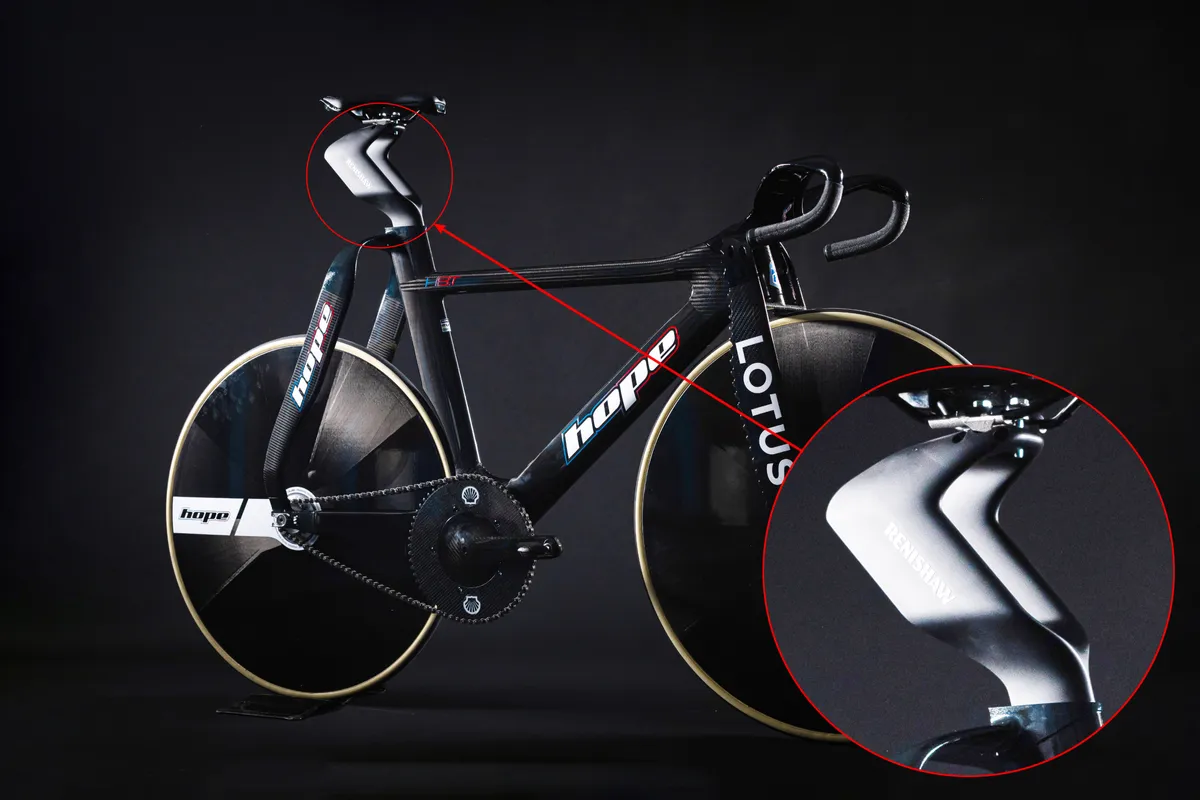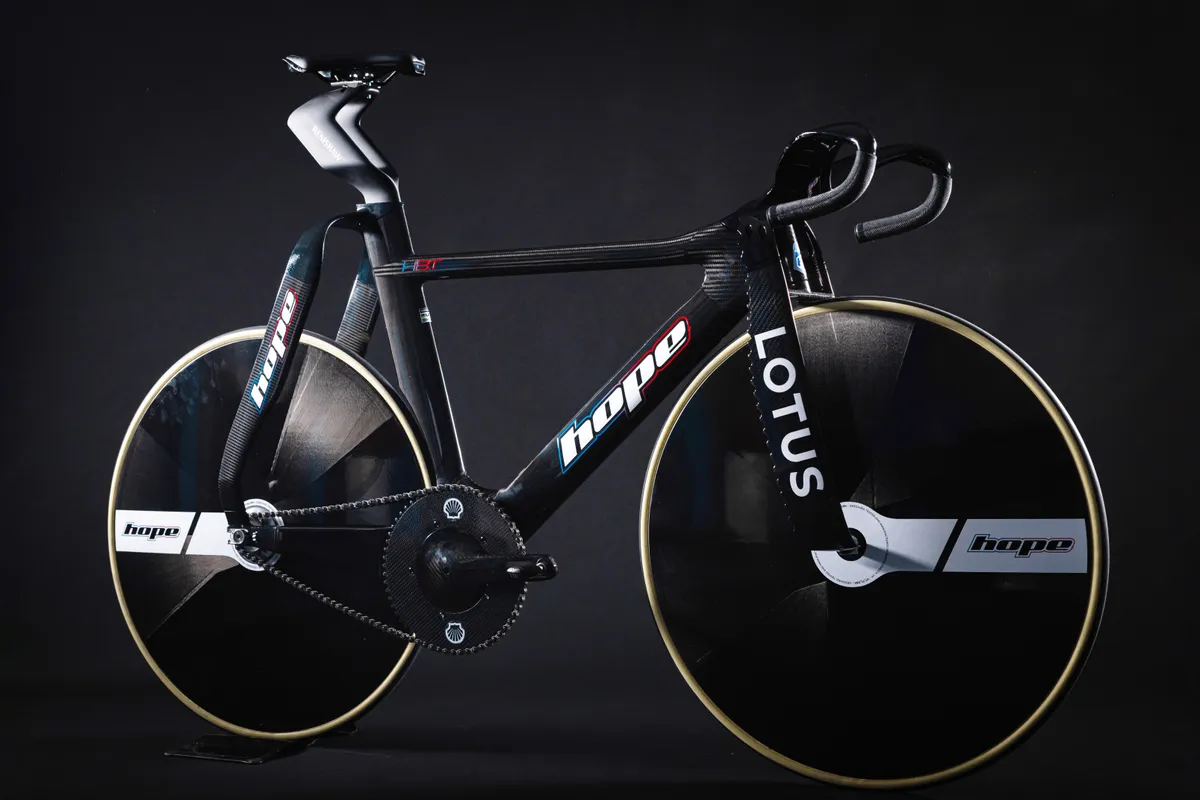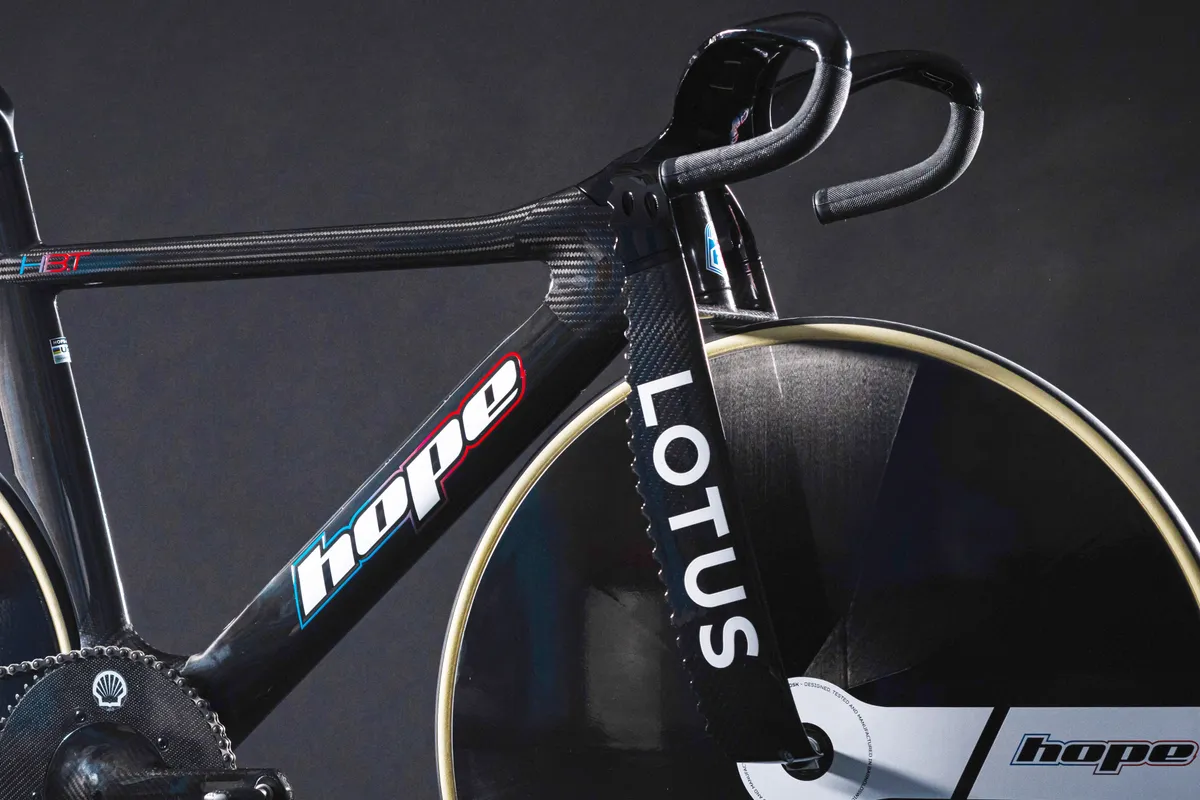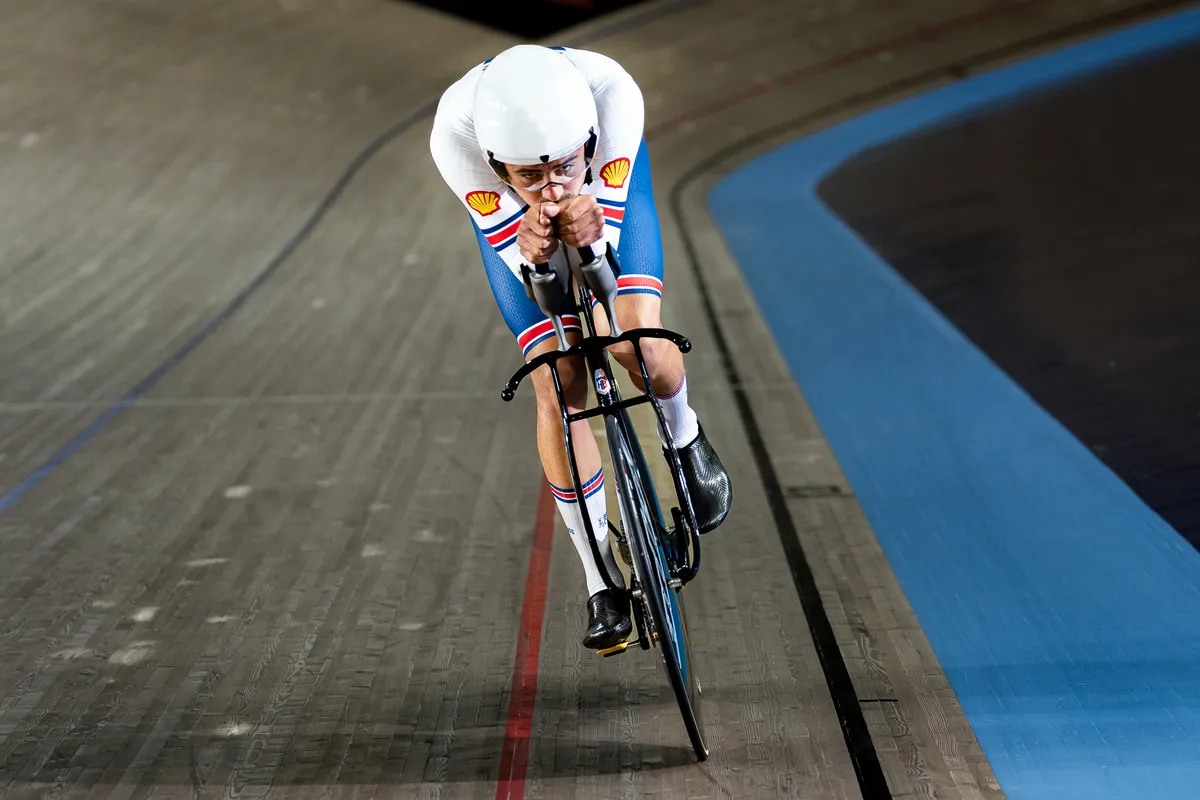British Cycling has unveiled the Hope HB.T Paris, an updated version of its iconic track bike, the Hope HB.T.
As well as updates to the frame and handlebars, the HB.T Paris features a striking, 3D-printed split seatpost made by Renishaw, a UK-based company that specialises in additive manufacturing (or 3D-printing, as it’s more commonly known).
The updated track bike has been announced ahead of the upcoming 2023 UCI Cycling World Championships, which are taking place in Glasgow next week.
Per UCI rules, nations must register equipment and clothing with the UCI ahead of each Olympic Games.
The UCI also requires nations to present this equipment for inspection at one of four events leading up to the Games.
With the 2024 Paris Olympics now less than a year away, the Glasgow World Championships is the last possible event to present equipment of inspection (according to the UCI’s own Equipment Registration Procedure document).
As such, British Cycling says it is bringing a total of “64 pieces of kit and equipment” to Glasgow, which could see “potential use at the 2024 Paris Olympic Games”.
Renishaw 3D-printed split seatpost

The most eye-catching part of the updated bike is undoubtedly the split seatpost.
While it appears to insert into the seat tube of the Hope carbon frame in a single aerofoil shape, it splits almost immediately above the seat clamp into two slim aerofoil shapes, leaving a gaping hole in the middle.
These then extend diagonally backwards before abruptly kinking forwards again towards the saddle clamp, where the two aerofoils rejoin each other.

Considering this is a bike designed for track racing, this design is almost certainly intended to reduce aerodynamic drag, rather than to improve compliance, for example.
At a glance, it appears to be an extension of the bike’s overall aerodynamic philosophy which considers the bike and rider as a system (rather than as separate component parts).
The fork legs and seatstays, for example, are placed in line with the riders legs, and it appears this seatpost design may be trying to achieve the same thing.

The design is somewhat reminiscent of the ‘IsoFlow’ seat tube hole on the latest Trek Madone SLR, too.
When that bike launched Trek claimed the hole helped accelerate airflow through it, reducing the bike’s trailing low-pressure wake (and, in turn, reducing its drag). Could British Cycling be attempting something similar there, too?
The cycling world has been treated to a number of unusual 3D-printed designs in recent years, from the original Hope HB.T and its wide stance seat stays and dual crown fork, to Filippo Ganna’s humpback whale-inspired Hour Record bike and the Mythos Elix 3D-printed stem. Wild new designs such as this suggest we’ve only scratched the surface at what’s possible with this (relatively) new manufacturing technology.
A Hope HB.T in Paris

Beyond the seatpost, the Hope frameset has also undergone a few notable revisions.
As already noted, the Hope HB.T Paris retains the holistic aerodynamic philosophy of its predecessor, aiming to account for the presence of the rider on board it.
The radically wide stance fork and seat stays remain, although it appears the 3D-printed parts at the tops of each have been updated to make them slimmer and more aerodynamic.
The trailing edge of the fork legs also appear have been updated with a sawtooth profile. Again, we assume this serves an aerodynamic purpose.

The head tube has also been updated, with the Paris bike losing the hourglass shape of the original bike, in favour of an incredibly slim, straight design.
Given the previous shape accommodated the frame’s headset bearings, it appears as the Hope HB.T is using a very small steerer tube and headset arrangement.

The Hope HB.T Paris is pictured with Hope’s own front and rear tubular track disc wheels, as well as a carbon fibre aero crankset and chainring combination.
British Cycling has shown two versions – one with time trial-style aero extensions for pursuit events and one with a drop handlebar for sprint and bunch races.
As before, the aero extensions also appear to be 3D-printed, though they are of a wider and deeper (and, therefore, presumably also more aerodynamic) shape than before.

The drop handlebars may also be 3D-printed, although as they’re painted it’s hard to be certain. Either way, these also use a fairly radical shape, with each arm of the bar rising outwards from the headtube to the drops.
The front-on picture of the new drop handlebars also shows the Hope frame equipped with a more standard, one-piece seatpost.
This could indicate the split-design post is only optimal for certain events, or for certain riders, and both types will be available as options.
